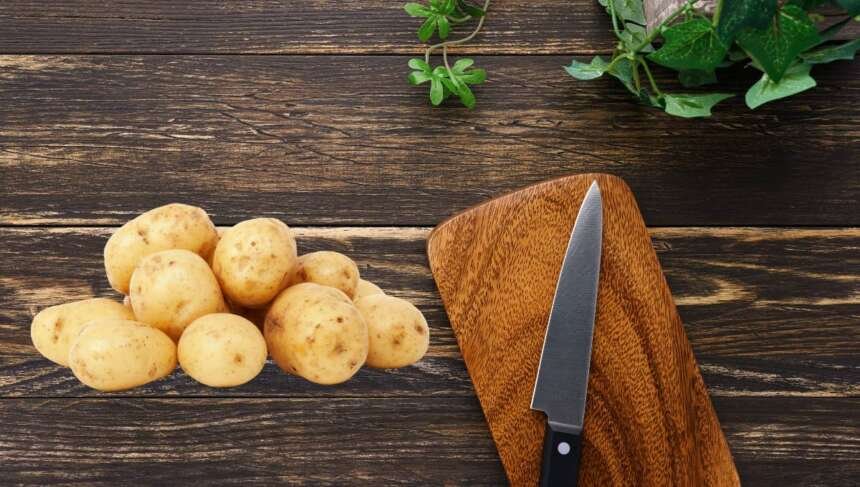Potatoes are a staple food in many households worldwide, valued for their versatility, nutritional value, and affordability.
Whether you’re planning a hearty meal or stocking up for the week, understanding how to properly store potatoes is crucial to ensuring their longevity and preventing spoilage.
In this comprehensive guide, we’ll explore the factors that influence potato shelf life, provide tips for optimal storage, and address common concerns about potato freshness.
Understand Potato Shelf Life
The shelf life of potatoes can vary significantly depending on several factors, including storage conditions, variety, and maturity. On average, fresh potatoes can last anywhere from one to two weeks when stored at room temperature, but proper storage techniques can extend their shelf life considerably.
Factors Affecting Potato Shelf Life
- Storage Temperature
Temperature plays a crucial role in determining how long potatoes will last. Potatoes stored at room temperature (around 68°F or 20°C) will typically last for one to two weeks. However, cooler temperatures can significantly prolong their shelf life. [Source] - Humidity Levels
Potatoes thrive in environments with moderate humidity levels. High humidity can lead to sprouting and rotting, while low humidity can cause them to shrivel and lose moisture. - Light Exposure
Exposure to light can cause potatoes to develop a green tint and produce solanine, a toxic compound that can make them bitter and potentially harmful if consumed in large quantities. - Potato Variety
Different potato varieties have varying shelf lives. Generally, thicker-skinned potatoes like russets tend to last longer than thin-skinned varieties like red or Yukon Gold potatoes. - Maturity and Age
Freshly harvested potatoes have a shorter shelf life compared to those that have been cured and properly stored. Older potatoes may develop sprouts and lose moisture more quickly.
Optimal Potato Storage Conditions
To maximize the shelf life of potatoes, follow these storage guidelines:
- Temperature: Store potatoes in a cool, dark place, ideally between 45°F and 50°F (7°C to 10°C). Avoid storing them in the refrigerator, as temperatures below 40°F (4°C) can cause the starch to convert to sugar, altering the taste and texture.
- Humidity: Potatoes thrive in moderately humid environments, around 90% relative humidity. You can achieve this by storing them in a well-ventilated container or a burlap or paper bag.
- Light: Keep potatoes in a dark or dimly lit area to prevent greening and the production of solanine.
- Ventilation: Ensure proper air circulation around the potatoes to prevent moisture buildup and spoilage.
- Separation: Store different potato varieties separately, as some may spoil faster than others.
Signs of Spoilage and When to Discard Potatoes
Despite your best efforts, potatoes may eventually show signs of spoilage. Here are some indicators that a potato has gone bad and should be discarded:
- Sprouts: Sprouting is a natural process that occurs as potatoes age, but excessive sprouting can lead to a bitter taste and loss of nutrients. Remove any sprouts before cooking, but discard potatoes with long, thick sprouts.
- Softness or Wrinkles: Soft or wrinkled potatoes have lost moisture and are no longer fresh. They may have an off-flavor and should be discarded.
- Green Coloration: Potatoes that have developed a green tint or patches have produced solanine, a toxic compound that can cause digestive issues if consumed in large quantities. Discard any potatoes with significant greening.
- Mold or Rot: If you notice mold growth or visible signs of rot, such as soft, mushy spots or an unpleasant odor, it’s best to discard the affected potatoes immediately.
- Shriveled or Sprouted Eyes: While small sprouts can be removed, potatoes with shriveled or deeply sprouted eyes are likely old and should be discarded.
Extending Potato Shelf Life: Tips and Tricks
If you find yourself with an abundance of potatoes or want to stock up for the long term, there are several techniques you can employ to extend their shelf life:
- Curing: Curing is a process that involves exposing freshly harvested potatoes to temperatures between 50°F and 60°F (10°C to 15°C) and high humidity for two to four weeks. This helps to toughen the skin and extend their storage life.
- Cold Storage: For long-term storage, potatoes can be kept in a cool, dark area with temperatures between 35°F and 40°F (2°C to 4°C) and high humidity (90% to 95%). This can extend their shelf life by several months.
- Freezing: While freezing potatoes is not recommended for long-term storage, it can be a viable option for short-term preservation. Blanch or partially cook the potatoes before freezing to prevent them from becoming mushy or discolored when thawed.
- Root Cellar or Basement Storage: Root cellars or cool, dark basements can provide ideal conditions for long-term potato storage, with temperatures around 40°F to 50°F (4°C to 10°C) and high humidity.
- Proper Handling: Avoid bruising or damaging potatoes during handling and storage, as this can lead to faster spoilage. Gently brush off any dirt or debris before storing.
By following these storage guidelines and understanding the signs of spoilage, you can enjoy fresh, flavorful potatoes for longer periods and reduce food waste in your household.
Conclusion
Potatoes are a versatile and nutritious staple that can last for weeks or even months with proper storage techniques. By controlling temperature, humidity, light exposure, and ventilation, you can maximize their shelf life and ensure you always have fresh potatoes on hand.
Remember to regularly inspect your potatoes for signs of spoilage and discard any that show significant deterioration. With a little care and attention, you can enjoy the delicious taste and convenience of potatoes while minimizing waste and maximizing their value.








